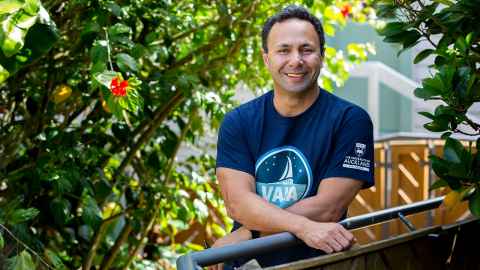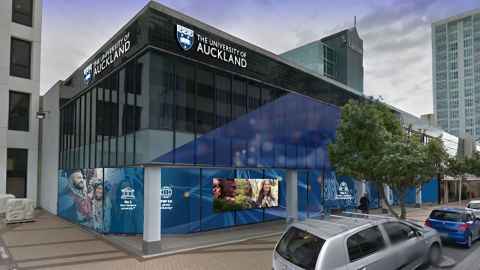Damon Salesa: navigating a new direction for a South Auckland campus
29 November 2019
Damon Salesa, Pro Vice-Chancellor Pacific, says the new South Auckland campus fills a need in the community.

The South Auckland campus opening for Semester One 2020 has the community and students at front and centre of mind in its planning.
The campus, at 6 Osterley Way in central Manukau, offers the Bachelor of Education programme and Tertiary Foundation Certificate. Associate Professor Damon Salesa, Pro Vice-Chancellor Pacific, says although the University has had a close relationship with Manukau Institute of Technology (MIT) in South Auckland, the new standalone campus will offer many things the previous campus didn’t.
“We’ve done well out there in the sense we’ve trained a whole lot of teachers who have gone on to teach in South Auckland,” he says. “Now we’ve expanded the facility, so it can run other programmes and courses there.
“There’s a wonderful student commons which has all the amenities of a study space on campus. We’ll also have laptop lockers so students can borrow laptops as they would library books.”
There will also be access to a kitchen and student-centred spaces. Damon says the exciting thing about the new campus is the engagement already going on with the community about the opportunities for learning there.
“School students will come onto campus through special programmes. For example, my office runs a programme called the Pacific Academy for Year 12 and 13 students, an academic programme to boost achievement. For those students to come all the way into the city is quite a challenge – it’s expensive and quite disruptive.
You open the space to a different audience when you’re there. It is their space.

“It will be so much easier to hold the programme in Manukau. We’ve already seen some conferences at the juncture of community research happening in South Auckland. You open the space to a different audience when you’re there. It is their space.”
Damon says work is well under way to deepen the engagements the University has with schools and the community.
“This facility is much more community and student-focused. We’re looking out, not just in.”
He says cutting travel costs for students eliminates one of the obstacles to study.
“We recognise that it can be expensive to come to town. There’ll be staff out there who support the academic wellbeing of students as well as models of pastoral care that mean they won’t have to come in for everything.”
Not everything he talks about will happen right from Semester One, but the opportunities being explored reflect a 21st-century campus.
“I don’t think we have to be as focused on physical location as we once were. For example, across the University, we record all stage one lectures. If you study at the South Auckland campus and can’t make it, and don’t have connectivity and a computer, you will you be able to get a laptop and get connected, and watch the lecture.
“But the real measure will be the student engagement with the facility, the community engagement and the difference it makes.”
He says in the old days they might have built a library on a new campus but with people accessing information and knowledge electronically, the focus now is on having a quiet study space. There will permanent staff attached to the student commons and all students have access to study-support services.
Programmes available at the campus in 2020 include the Bachelor of Education (Teaching) Primary, the Tertiary Foundation Certificate – Education and Social Work Pathway, and New Start, a 12-week course for those over 20 without formal qualifications. The campus opens 8am to 8pm weekdays, and midday to 6pm on the weekends.
“What the students should really see is the very real commitment the University has to supporting their learning. It’s an innovative and entrepreneurial response to that need, driven by a commitment to connecting deeply with South Auckland, especially Pacific and Māori communities.”
-
UniNews December 2019. Size: 2.8 MB.
Document Description: This article first appeared in UniNews December 2019. Download the full magazine.